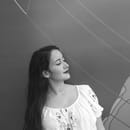Jennifer Packer’s first artist book, revolving around her exhibit “Tenderheaded” which displayed in Chicago last fall and received overwhelmingly positive reviews, has been published- and is sold out only four days after it’s date of release.
Solveig Øvstebø was described as a “Renaissance Woman” by “Art in America”. Besides holding the highly acclaimed position of Chief Curator and Executive Director of the Renaissance Society at the University of Chicago, she has mastered a plethora of exhibits as director of the Bergen Kunsthall in Norway, one of the most prestigious contemporary art museums in the country, and was one of the main participants in the Bergen Bienniel Conference, a meeting for scholars and artists to discuss and create new modern art concepts.
In September of 2017, Øvstebø curated “Tenderheaded,” a series of paintings by Bronx-based artist Jennifer Packer for the Renaissance Society. The artwork shown is a mix of funeral bouquet paintings and portraits of men and women in casual settings, shown lounging on couches or in their bedrooms. Her artwork has a strong meaning behind it, as she contemplates race and vulnerability through her paintings as her portraits mainly depict black subjects. Although I was unable to meet with Øvstebø in person, I interviewed her via e-mail with the help of the Renaissance Society’s director of communications, Anna Searle Jones.
VITERI: How much time did it take to plan this exhibition?
ØVSTEBØ: I first saw Jennifer’s work in a group exhibition at Corbett vs Dempsey about four years ago. She showed a small painting there and I got very interested [in] finding out more about this artist. It was about a year and a half ago that I went to her studio and started to get to know her and her work with a view to organizing an exhibition here.
In your opinion, do Jennifer Packer’s paintings lean more towards abstract art or modern expressionism, or another genre of art?
ØVSTEBØ: I don’t think that she has a particular style that she adheres to. She’s an amazing painter who is very engaged with the tradition of painting. Her technical skills when it comes to drawing and painting are very strong, but she also brings to the work a clear concept and content. She draws on elements of lots of chapters in art history, from abstract art, to figuration, history paintings, and Old Masters. The way she combines them makes her paintings really distinct and fresh.
VITERI: How did you and/or Jennifer Packer decide on the name “Tenderheaded” for the exhibit?
ØVSTEBØ: Jennifer chose the title because of its dual meanings. In a physical, bodily sense, it is used to describe black girls if they find getting their hair done particularly painful. She also uses it in a more emotional sense to point to themes of tenderness, vulnerability, and care.
VITERI: Coming from Ecuador, I’ve seen that art exhibits are constructed differently based on the cultural context. Did you find any cultural differences between curating exhibits in Norway versus in Chicago?
ØVSTEBØ: Not really. In Norway I worked in a similar type of institution — i.e. contemporary focus, non-collecting, non-profit — with international artists, so the curating of exhibitions is pretty similar. I think probably Western Europe and the United States aren’t so different in that regard, but I can understand how it might differ elsewhere in the world.
VITERI: To what extent do the interactions with the artist influence your perspective on their work, and your final curatorial decisions?
ØVSTEBØ: Putting together an exhibition is always a close conversation with the artist. Even when I’m curating a group exhibition I really like to work closely with the artists to understand them, their ways of working, and their work. We make decisions about the exhibition in an ongoing dialogue.
VITERI: How does curating an exhibition with media involved differ from a strictly canvas exhibit?
ØVSTEBØ: Some shows are more technically complex than others, but as I said, the organization of an exhibition is always a close dialogue with the artist, regardless of the actual format of the works. With multi-media projects, there is maybe more to think about in terms of sound, light, movement, and duration.
VITERI: While I was visiting the exhibit, I noticed the space had many unconventional spaces, such as the window hangars where there wasn’t room to hang paintings. Given the uneven wall surfaces, was this area difficult to work with?
ØVSTEBØ: The Ren’s gallery is a challenge, which is why it is a great space to work with. There are obstructions, as you say, but when you overcome them they give extra energy to the display. The artists and I take the whole space into consideration when we’re planning an exhibition. The space changes for each presentation in response to the needs of the artist, and the artists themselves often respond to the space when they’re making new works or installations for us.
VITERI: And finally, do you have a favorite painting in this exhibit?
“Say Her Name”
Although no longer on display, Jennifer Packer’s artist book can be found once it’s back in stock here. If anybody’s interested in getting it at our school’s library, send us an e-mail at saic@hercampus.com


